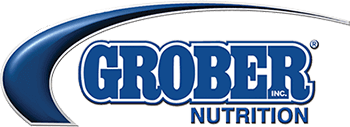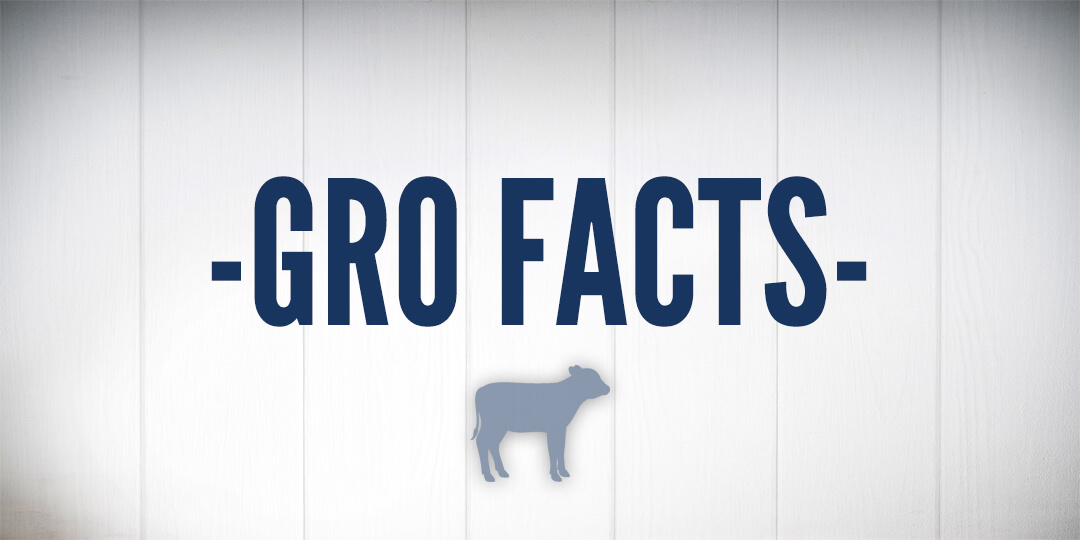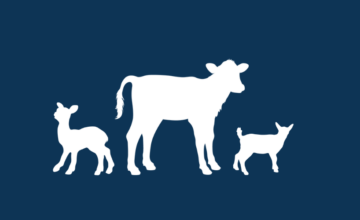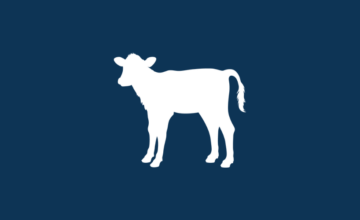Setting the Right Feeding Program for Your Calves
- Jan 02, 2013
- By Grober Nutrition
- In Canada, USA
The Grober Young Animal Development Center opened its doors in 2009 with the mission of uncovering and presenting best rearing practices for young animals. Over the past three years, approximately 300 calves, 40 lambs and 40 kid goats have resided at our Woodstock facility for the purpose of conducting nutritional and management research. We have partnered with others from the industry (feed companies and producers) in order to ensure the research is applicable in today’s farming community. Automatic feeding machines for calves has been a part of the dairy management la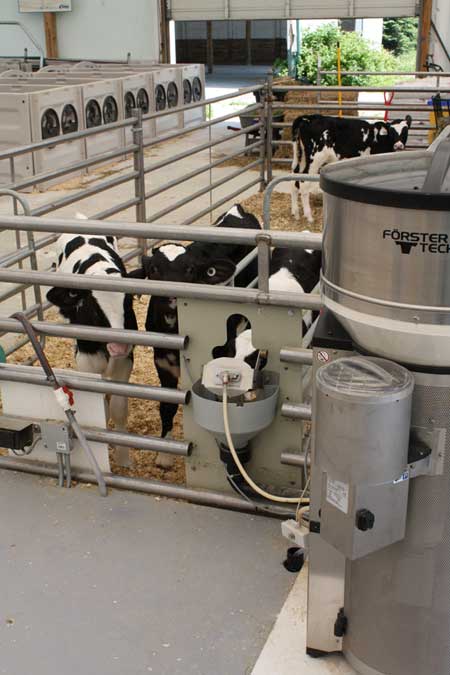 ndscape for a number of years facilitating the feeding of calves by reducing the chores of preparing and delivering milk replacer. Time spent in calf barns is now focused on management, cleaning and animal observation. While the automatic feeding machine is an excellent tool, programming the feeding schedule is still a key part to the success of those calves. In 2011, Grober evaluated two different feeding programs through the automatic feeding machine. We wanted to understand if allowing a calf to determine her own appetite through unlimited access to the milk feeder would be the right approach to feeding. Much academic research over the past 20 years has supported increased milk intake for optimal calf growth and their subsequent performance during first lactation. In 1968, Hafez and Lineweaver found that calves suckled on average 16-24% of their bodyweight, which would amount to 7.2-10.8 Liters[1] (L) per day for a 45 kg (100 lb) calf. That range would indicate that different calves have different appetites, whether that variation was based on size, genetics or environment was not evaluated in that research. For the purpose of this trial, 38 calves were split into four groups all fed by automatic feeding machines. One machine, which fed two groups, provided an unlimited amount of milk replacer throughout the day and the other machine limited calves to consuming 9 L/day. All calves were allowed to drink between 2 and 3L per visit to the machine. Calves receiving limited amounts of milk replacer were provided the following schedule: 6L/day for the first 5 days, 9L/day for the next 41 days and then weaned over 10 days (milk reduced from 9L – 2L over the 10 days). The total time on milk replacer for both groups was 56 days. Calves offered an unlimited daily consumption of milk replacer consumed 73.6 L (11 kg; 24.2 lbs) more milk replacer than the limited calves. Unlimited calves consumed on average 8.4 L/day and limited calves consumed on average 7.1 L/day. Bodyweights were slightly higher in the unlimited groups from the start until weaning (week 8) (figure 1). Overall bodyweight gain was not different between groups (50.6 kg – 111 lbs for unlimited and 51.0 kg – 112 lbs for limited). Starter intake was not different between groups until weaning time when limited calves consumed more starter – 1.5 kg/day (3.3 lbs/day) limited versus 1.1 kg/day (2.4 lbs/day) unlimited (figure 2). There was no difference in health events; both groups had an average of 3 health events/calf. When designing a feeding program using an automatic feeder it would appear that limiting the amount of milk replacer to ensure calf needs (maintenance and growth) allows for increased grain intake and smoother transition at weaning while not compromising growth. Further work at the Grober Center (2012) will be done looking at providing unlimited milk to calves over the first few weeks and then gradually reducing milk intake over the next 5 weeks.
ndscape for a number of years facilitating the feeding of calves by reducing the chores of preparing and delivering milk replacer. Time spent in calf barns is now focused on management, cleaning and animal observation. While the automatic feeding machine is an excellent tool, programming the feeding schedule is still a key part to the success of those calves. In 2011, Grober evaluated two different feeding programs through the automatic feeding machine. We wanted to understand if allowing a calf to determine her own appetite through unlimited access to the milk feeder would be the right approach to feeding. Much academic research over the past 20 years has supported increased milk intake for optimal calf growth and their subsequent performance during first lactation. In 1968, Hafez and Lineweaver found that calves suckled on average 16-24% of their bodyweight, which would amount to 7.2-10.8 Liters[1] (L) per day for a 45 kg (100 lb) calf. That range would indicate that different calves have different appetites, whether that variation was based on size, genetics or environment was not evaluated in that research. For the purpose of this trial, 38 calves were split into four groups all fed by automatic feeding machines. One machine, which fed two groups, provided an unlimited amount of milk replacer throughout the day and the other machine limited calves to consuming 9 L/day. All calves were allowed to drink between 2 and 3L per visit to the machine. Calves receiving limited amounts of milk replacer were provided the following schedule: 6L/day for the first 5 days, 9L/day for the next 41 days and then weaned over 10 days (milk reduced from 9L – 2L over the 10 days). The total time on milk replacer for both groups was 56 days. Calves offered an unlimited daily consumption of milk replacer consumed 73.6 L (11 kg; 24.2 lbs) more milk replacer than the limited calves. Unlimited calves consumed on average 8.4 L/day and limited calves consumed on average 7.1 L/day. Bodyweights were slightly higher in the unlimited groups from the start until weaning (week 8) (figure 1). Overall bodyweight gain was not different between groups (50.6 kg – 111 lbs for unlimited and 51.0 kg – 112 lbs for limited). Starter intake was not different between groups until weaning time when limited calves consumed more starter – 1.5 kg/day (3.3 lbs/day) limited versus 1.1 kg/day (2.4 lbs/day) unlimited (figure 2). There was no difference in health events; both groups had an average of 3 health events/calf. When designing a feeding program using an automatic feeder it would appear that limiting the amount of milk replacer to ensure calf needs (maintenance and growth) allows for increased grain intake and smoother transition at weaning while not compromising growth. Further work at the Grober Center (2012) will be done looking at providing unlimited milk to calves over the first few weeks and then gradually reducing milk intake over the next 5 weeks.
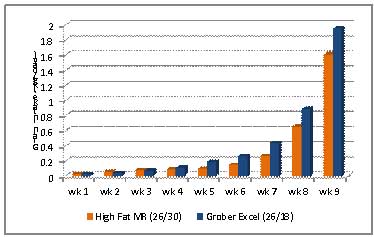 Figure 1 Bodyweight comparisons between treatment groups
Figure 1 Bodyweight comparisons between treatment groups 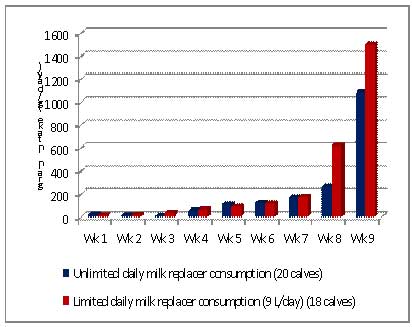 Figure 2 Starter intake comparisons between treatment groups.
Figure 2 Starter intake comparisons between treatment groups.
Grober Nutrition
Recent Posts
Tags
Archives
- October 2024
- July 2024
- May 2024
- April 2024
- January 2024
- December 2023
- October 2023
- September 2023
- August 2023
- June 2023
- December 2022
- November 2022
- October 2022
- August 2022
- July 2022
- June 2022
- May 2022
- April 2022
- March 2022
- February 2022
- January 2022
- August 2021
- February 2021
- September 2020
- June 2020
- April 2020
- May 2017
- April 2017
- October 2016
- September 2016
- August 2016
- March 2016
- March 2015
- January 2015
- December 2014
- December 2013
- September 2013
- May 2013
- January 2013
- December 2012
- November 2012
- March 2012
- March 2011
- February 2011
- November 2010
- August 2010
- December 2009
- November 2009
- March 2009

